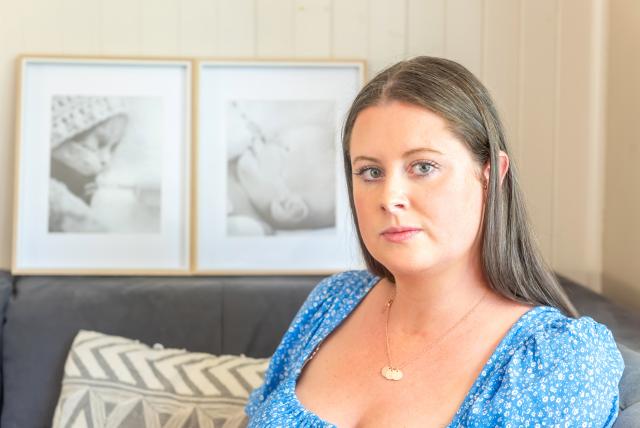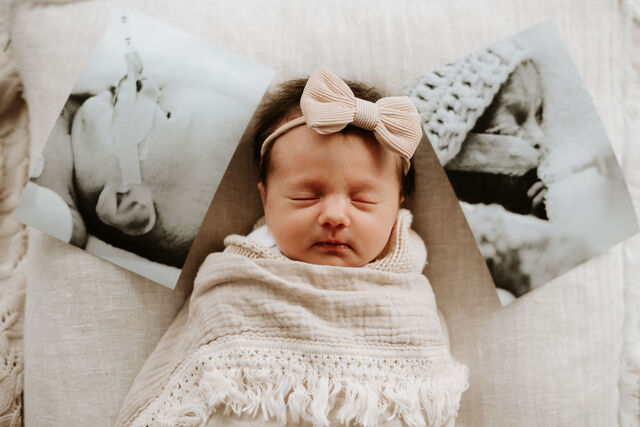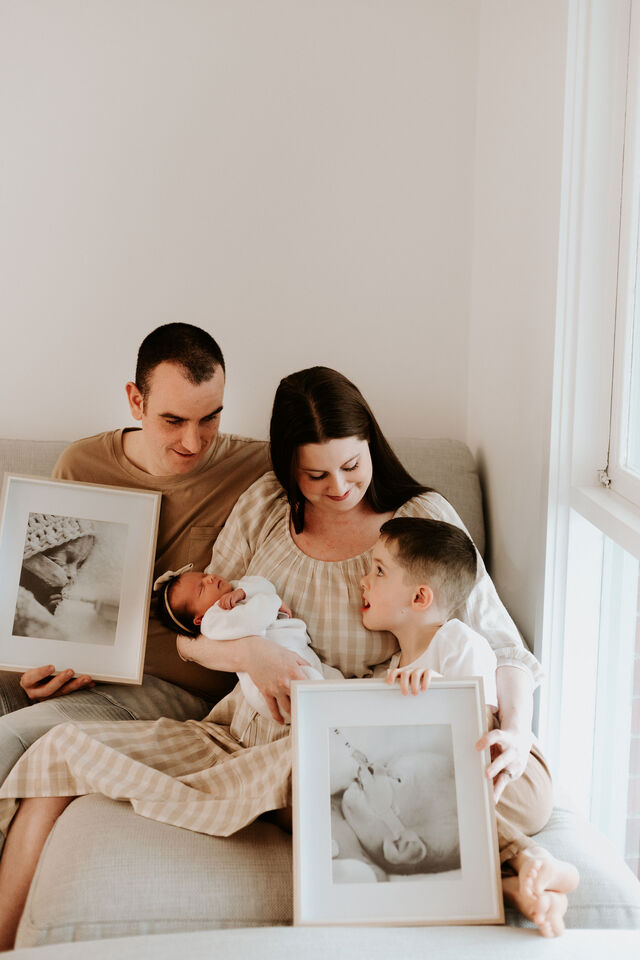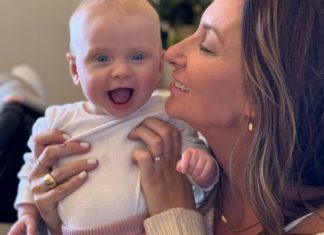By Casey Neill
Rachel Boyle knows the value of genetic testing all too well.
The Woori Yallock mum’s heartbreaking loss of two babies could have been avoided had she and husband Blake discovered the perfect storm lurking in their DNA sooner.
“I just want people to not have to go through what I’ve gone through,” she said.
“If you spend $800 or $1000 on extensive genetic testing, it’s worth not losing a child’s life.
“If nothing comes up you’ve got peace of mind.
“Everyone thinks it won’t happen to them.”
Rachel and Blake decided to try for a baby shortly after their wedding.
“We got pregnant after a few months and had our son Kai,” she said.
They wanted two children close in age, so tried for another baby when Kai was nine months old.
“We very luckily fell pregnant first go,” she said.
“But there were complications at 20 weeks.
“Our second son, Caden, was born at 24 weeks.
“It was a complicated birth that nearly ended my life, to the point where they had to choose to save me or the baby.
“He was born alive, magically, at only 424 grams.
“He was taken to the NICU where we thought we were just going to have a long road letting him grow.
“After six days he was too sick, he had a brain bleed and we had to make the decision to take him off life support.”
Rachel and Blake asked questions about what had happened and tests they could take.
Their medical team told them they were ‘just unlucky’ and ‘these things happen’.
“They said we were safe to try again for another baby,” Rachel said.
She waited for her body to recover then again fell pregnant.
“Everything was fine up to 20 weeks when I was hit with the same complications,” she said.
“The baby wasn’t growing properly.”
Rachel developed preeclampsia, which affected the baby’s growth even further.
“I was admitted to hospital for two months because my body was shutting down,” she said.
Covid had Melbourne locked down so toddler Kai couldn’t visit his mum.
“That’s not normal for a child to be kept away for months on end,” Rachel said.
She had scans, medications, and tests every day.
“It got to a point where she wasn’t growing properly so we had to do a c-section to give her the best chance to survive,” she said.
Ava was delivered at 27 weeks but weighed only 500g.
“She cried when she came out. That gave us a lot more hope,” Rachel said.
Doctors started to believe something genetic was at play.
“After nine days we had to take her off life support,” Rachel said.
“There was nothing more the doctors could do.
“Our amazing fetal medicine specialist…she wanted to push for genetic testing but it was expensive and not guaranteed to find anything.
“They’d never seen what had happened to Caden and Ava.”
So a rare genetic study examined DNA from Rachel, Blake, Caden, and Ava “to look for whatever they could find”.
“It was an excruciating wait,” Rachel said.
“I didn’t know if I’d ever be able to have another baby.
“About 10 months later they got the first round of genetic results.”
Rachel and Blake both carried a rare gene, LARS1, which causes infantile liver failure syndrome. Only 25 cases had been recorded worldwide.
It affects every organ in the body and is not normally compatible with life.
“It was amazing to have an answer as to why they were sick and why Kai was OK,” Rachel said.
“He had skipped the gene.
“It was also a relief to know that choosing to take them off life support was the right decision.
“Once we were given an answer as to why it happened, we were provided with some possible ways to have another baby in the future if we wanted to.
“We could try naturally and at 16 weeks have to do some intensive testing. If the baby carried the disorder we would have to terminate.
“The other option was doing IVF and picking an embyro that was not affected.”
They took the IVF route.
“We didn’t want to have to make the decision to terminate,” she said.
“We didn’t want to give up on our dream of having two living children so we decided to try even though we were terrified.”
They created four healthy embryos and transferred one successfully.
“Then we began the very difficult pregnancy, waiting to see if we would lose another baby to another problem,” Rachel said.
“Even though it was a tested embryo, there was still a small chance she’d be affected – it’s not 100 percent.
“We had to wait for 16 weeks to do an amniocentesis – which is risky, it can cause miscarriage – and hope that the embryo testing was good enough.”
Throughout her pregnancy, Rachel had weekly scans and wellbeing checks plus monthly psychological checks.
“It was probably more hard mentally than physically,” she said.
“With Caden and Ava, it was taking every ounce of my energy to keep them alive.”
She couldn’t speak highly enough of the support she received from her medical team.
“They always talked about Caden and Ava,” she said.
“We would laugh about this baby trying to prove to us that it would all be OK because she was so big.”
Rachel was due to have a planned c-section at 36 weeks – the way her c-section to deliver Ava was performed meant a chance of uterine rupture if the pregnancy progressed any further.
“I was trying to count down to the c-section date, getting more and more hope but also terrified that hope would be crushed again,” she said.
Blake dissociated.
“He didn’t have to feel the pregnancy so he was just pretending like I wasn’t pregnant, because it was too hard to think about,” she said.
“He was still supportive, he came to every appointment, but he was detached from any hope that she would make it.
“His biggest worry about trying again was losing me because he’d nearly lost me twice.”
Kai, then 3, was very excited about the prospect of a living sibling.
“At such a young age he had already been through the loss of his brother and his sister,” Rachel said.
“He met them, he knew that they died.
“He would ask, ‘Is this baby going to live, is this baby going to come home?’.
“We had to tell him the truth: ‘We don’t know, we’ll just wait and see’.
“He’s extremely empathetic now because of what he’s been through.
“He’s had to mature a lot quicker than he should have.
“We feel a lot of guilt about that.”
Two days before her c-section date, Rachel started going into labour.
“Our whole medical team was notified and they tried to slow it down, but it wouldn’t slow down,” she said.
So they decided to deliver Grace early.
Right before the surgery, two rainbows appeared in Rachel’s hospital room, on the wall and the bed.
“The doctors just cried,” she said.
“It was like a sign that it was nearly time and she was going to be OK.”
The doctors who’d cared for Rachel, Caden, and Ava were present, and photos of Caden and Ava were in the room.
“When she was born it was like a relief and a release, just that she was alive,” Rachel said.
“They put her on my chest and let me just cuddle her.
“I just couldn’t believe it. It was like a dream.
“She didn’t need any special care time.
“Kai got to come meet her; it was beautiful.”
Then came the time to take Grace home.
“That was hard because we didn’t believe it was going to happen,” Rachel said.
“We’d prepared and bought stuff but we hadn’t let ourselves imagine bringing her home, after trying for nearly four years.
“Then we felt this huge responsibility. She’s here, she’s alive, now we’ve got so much health anxiety and fear of something happening.
“I was tracking every mill of milk and every minute of sleep.
“I was trying to breastfeed and pump and formula feed.
“I thought she was going to die.
“We had to go back to hospital a couple of times.
“What we dreamed of we had had in front of us, but it was so clouded still with trauma and grief and now anxiety.
“She had really bad reflux, she was crying a lot, I was scared of something happening.”
Rachel finally had her happy ending but instead felt a complex mix of emotions.
Grace was nearly one when we spoke.
“I’m loving it now. I feel really at ease with her,” she said.
“I’m still just processing that she’s actually here safely.
“But seeing her and Kai play is the thing I dreamed of the most, just having someone for him to play with.
“He’s obsessed with her. She’s obsessed with him.
“That’s all I wanted.”










